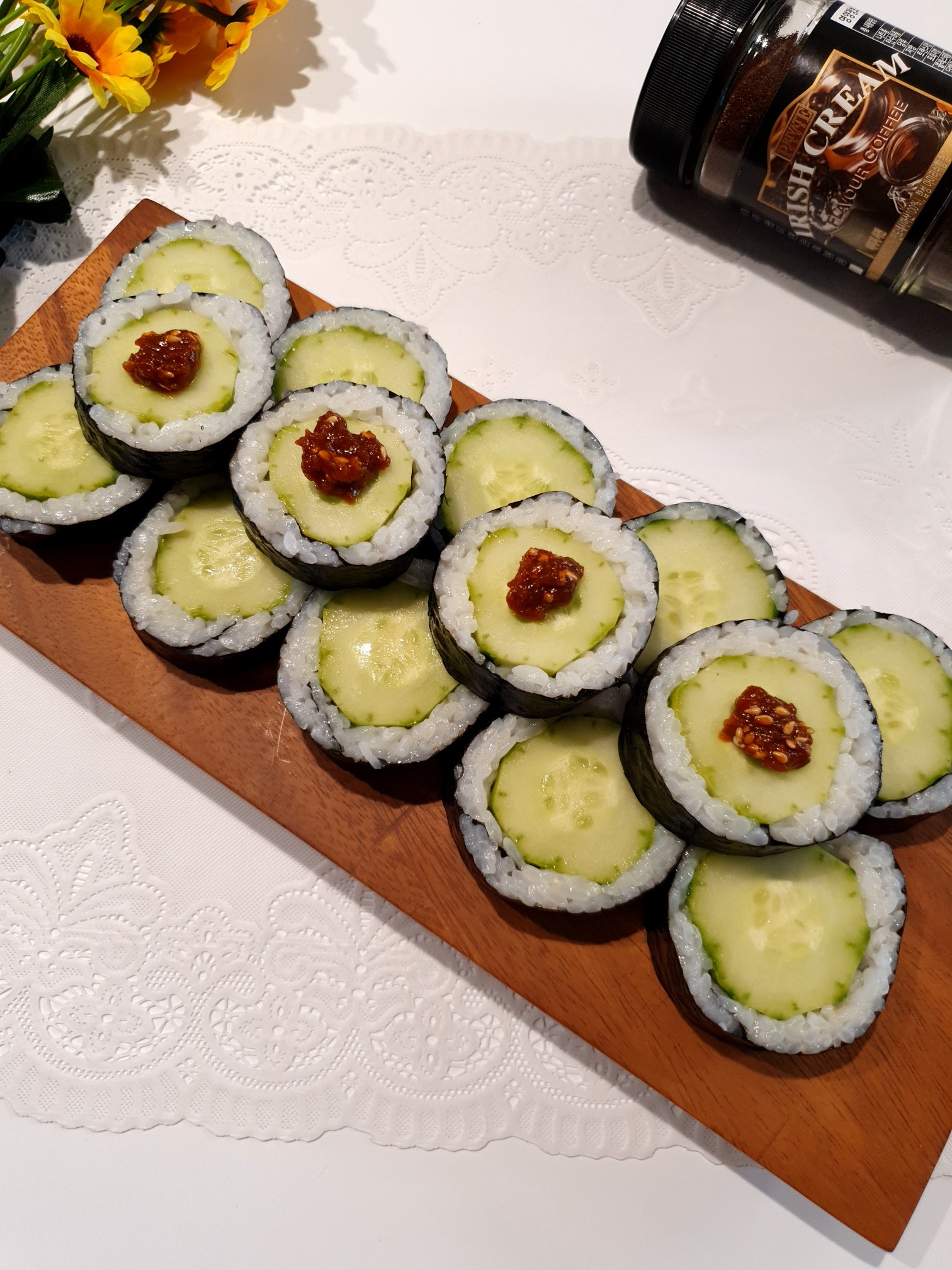Refreshing Cucumber Kimbap: A Light and Delicious Diet Recipe
Follow Chef Choi Hwa-jung’s Recipe: Making Cucumber Kimbap for a Lighter Body

A magical recipe that makes you feel light and refreshed! Introducing Chef Choi Hwa-jung’s cucumber kimbap recipe, perfect for enjoying delicious food even while dieting. It’s a complete healthy and tasty meal.
Kimbap Ingredients- 2 fresh cucumbers
- 1 bowl of freshly cooked warm rice
- 2 sheets of seaweed (gim) for kimbap
Sweet and Sour Vinegar Dressing- 1 Tbsp granulated sugar
- 3 Tbsp vinegar (rice vinegar or white vinegar)
- 1 pinch of salt (very small amount)
Accompanying Ssamjang Sauce- 1/2 Tbsp ssamjang (Korean fermented soybean paste)
- A little sesame oil (for nutty aroma)
- A little toasted sesame seeds (for garnish and flavor)
- 1 Tbsp granulated sugar
- 3 Tbsp vinegar (rice vinegar or white vinegar)
- 1 pinch of salt (very small amount)
Accompanying Ssamjang Sauce- 1/2 Tbsp ssamjang (Korean fermented soybean paste)
- A little sesame oil (for nutty aroma)
- A little toasted sesame seeds (for garnish and flavor)
Cooking Instructions
Step 1
Prepare 2 fresh cucumbers. Wash them thoroughly under running water multiple times. It’s important to remove any dirt or residual pesticides that might be on the peel.

Step 2
Trim off both ends of the cucumbers, especially the parts that might taste bitter. Then, using a vegetable peeler, peel the skin in strips, going around the cucumber 2-3 times. This helps retain the cucumber’s crispiness while reducing any bitterness.

Step 3
Let’s make the sweet and sour vinegar dressing that will define the kimbap’s flavor. In a small bowl, combine 1 Tbsp sugar, 3 Tbsp vinegar, and a tiny pinch of salt. Stir well until the sugar is completely dissolved.

Step 4
Place 1 bowl of freshly cooked, warm rice into a wide bowl. Pour the prepared sweet and sour vinegar dressing over the rice.

Step 5
Using a spatula or spoon, gently mix the rice and dressing, being careful not to mash the rice grains. Ensure the dressing is evenly distributed throughout the rice. The goal is to have fluffy, seasoned rice grains.

Step 6
Place a sheet of kimbap seaweed (gim) on a cutting board or bamboo mat. Spread about two-thirds of the seasoned rice thinly and evenly over the seaweed. Leave about one-third of the seaweed edge at the top without rice so the kimbap can seal properly when rolled.

Step 7
Lay the sliced cucumbers lengthwise in the center of the rice-covered seaweed. Using the bamboo mat or your hands, roll the seaweed tightly but gently, encasing the cucumbers. Avoid pressing too hard to prevent the kimbap from breaking.

Step 8
Brush the outside of the rolled kimbap with a little sesame oil. This enhances the kimbap’s aroma and flavor, and also prevents the seaweed from becoming dry or soggy.

Step 9
Slice the kimbap into bite-sized pieces, about 1 to 1.5 cm thick. Using a sharp knife will help you cut cleanly without squishing the rice. Slightly wetting or oiling the knife can also make slicing easier.

Step 10
For a special dipping sauce, combine 1/2 Tbsp ssamjang, a little sesame oil, and a sprinkle of toasted sesame seeds in a small dish. Mix well. Enjoy this unique ssamjang sauce alongside your cucumber kimbap for a different flavor experience.




